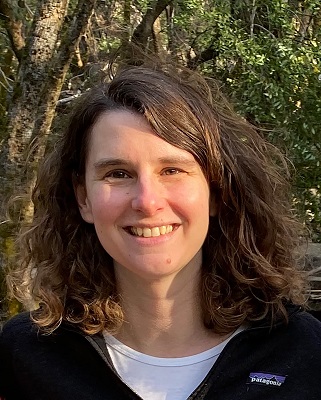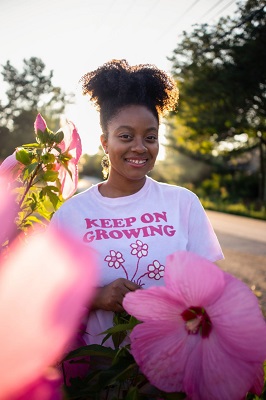
The climate crisis is not an immovable object. It is a battle with many fronts and people around the globe looking for solutions for the problems that they see, working within their own expertise and communities. These four climate warriors who come from different walks of life but share the same goals of mobilizing citizen and government action to stop the planet from warming even more and to protect the people on it. Their stories give insight to their hard work and give needed inspiration as we forge ahead, together.
Dr. Sacoby Wilson, Scholar

What do you struggle with the most as a scholar?
I think the struggle is with academia as a whole. There’s a lot of scientific research that’s just done to discover or produce knowledge, but not enough work that focuses on actually problem-solving. So why aren’t we doing more science to actually solve problems? Why aren’t we doing more science that focuses on environmental benefits? Why aren’t we doing science focused on building healthier communities? I think that’s the bigger issue.
How can others help you in your work?
I think one of the things that I’m really excited about is community science, or another term is citizen science. You do not have to have a PhD to be a scientist. That’s the beauty of science. I think the more we train regular everyday folks to be scientists, the more folks will be in a social movement, the more participants that we can have to affect change, to improve environmental health, to improve public health. So, I think educational organizations, youth organizations, STEM organizations, they have an important role to play.
What is the most rewarding part of your work?
I think the most rewarding part of my work is really community engagement, being able to actually work with communities. Because I work best when I have good relationships with folks, and I see a lot of people that I work with as part of my extended family.
One of the most rewarding experiences more recently has been working with folks in the Gulf Coast Equity Consortium. They have historically Black colleges working with community organizations in five communities across the Gulf Coast working in Houston; in Lower Ninth in New Orleans; in Biloxi, Mississippi; Africatown in Mobile, Alabama; and also in Florida.
So, I get a chance to work with my mentors, some environmental justice icons, and we bring our different skills to translating science to action for those community based organizations.
Interviewed by Mary Meade
Raina Ivanova, Youth Activist

for EarthJustice.
As the group Children vs Climate Crisis what have you been able to accomplish so far?
I think we’ve helped people realize that it’s not just us because there are many people in this fight. We’ve done complaints and strikes and organized people, and by doing something so new with this complaint, we could get more attention leading to that topic. There’s also a realization I think people can have about how the way [they] live is causing those things—the way most people from Germany or from Europe live is causing those problems. When you start thinking about that, you cannot really stop thinking about it and then you, of course, take action.
For people who feel like they’re not as involved as they could be, how can they help you in your mission?
When we talk about the climate movement, I feel like we separate the activists from everyone else, but I think that’s a mistake because we’re all in this together. We’re all just one, we’re all affected by this. For me, there’s no question on why we should act because we all have to.
If you’re a person who’s not involved yet in the movement, you shouldn’t separate yourself from the people who already are because we’re all just people out there trying to do something better. And if you’re trying to help, you can start at your own home. It doesn’t have to be something huge, just see how you can reduce your own carbon emissions. I feel like what most people don’t see is that it’s not only the big picture, it’s every single person individually that needs to make a change.
How do you how do you keep yourself motivated in your work?
I think when I started in this movement, I kept myself motivated because I knew that the things we did were good, and that it would help others even if they just were small things. And then also, as I kept on doing those things, I got to know a lot of other amazing activists out there. I try to not see the crisis as completely negative because you can become close with the community of people around you.
Interviewed by Asher Weinstein
Kristina Dahl, Climate Scientist

What are the most challenging and rewarding parts of your work?
One of the more rewarding parts of the work that we do is when we hear that communities are using the information that we’ve developed. We really aim to produce analyses that can be picked up by policymakers and decision-makers at the local level. When we get news that they’ve incorporated our data and analyses into their climate action plans or into future development plans, that’s extremely rewarding because it tells us that communities really do need this information in order to make sound decisions about their future.
One of the more challenging aspects of the work is that sometimes it feels like no matter how much data or how much science we produce, it’s hard to move the needle on public opinion on the need for climate action. And we know from communication studies that it’s not data, necessarily, that changes people’s minds. But as a scientist, it’s hard not to look at this data and wonder how people could maintain the position that we should not take action on climate change.
Are there any misconceptions about what you do?
I think there are still a lot of misconceptions about the science of climate change. Overall, public-opinion polling is showing a trend towards more and more Americans seeing climate change as a real problem and understanding that humans are the cause of that.
There are still surprisingly few people who think that scientists are unanimous in their understanding of climate change and the fact that humans are causing it. So the general public still thinks that there’s an active discussion about that in the scientific community when really there hasn’t been for probably a decade or more.
I also think that you hear a lot of skepticism about the fidelity of climate models. People say, “Oh, it’s just a model and models are always wrong.” No model is ever perfect.
A recent study went back and looked at all our climate models since the 1970s, when they were much more simplistic, and said, “How well did those models predict the temperature change that’s now already seen?” And the answer is that they’ve done very, very well, even our very simple models back in the 70s. So I would say that there’s a misconception about how well our models can simulate reality, and in truth, they do really excellent job of doing so.
How do you keep yourself motivated in your work?
I love the outdoors. I love nature. It’s what attracted me to the earth sciences to begin with. For me, visiting the places that I love like Yosemite National Park,and seeing the destruction that’s been caused to the forest there by recent droughts and an infestation of beetles that are killing the trees there, is both extremely saddening and extremely motivating. I want my children to be able to enjoy the natural world around just as I have been able to. Preserving what we have and making sure that the future is faced and the earth is as wondrous as it has been, for me in my lifetime, is what motivates me.
Interviewed by Eleanor Greene
Haile Thomas, Community Builder

What do you think you’ve been able to accomplish so far?
I’ve spoken to over 80,000 people around the world since 2010 when I started my activism and have taught 40,000 young people through my nonprofit. Those are things that I’m proud of but I tend to focus on the days when I can just show up, share my journey, and be of service to the community.
How can people support this mission?
I think the biggest way people can help is just to be open to learning about these things. I think that the first roadblock to social engagement is just a lack of awareness and willingness to learn and dismantle perceptions that you may have about health and food, a certain group of people, or what’s going on in the world. Just being open to doing that is the first step and I encourage my community of followers to do that and join conversations that may be full of diverse perspectives.
I’m also excited to release my cookbook, Living Lively, in July. It’s full of plant-based recipes and advice from some amazing leaders I’ve met on my wellness journey.
Do you think there are any misconceptions about what you do?
For sure. I get comments that the health space is for those who don’t look like me. Being African American, I feel that we have unintentionally lost touch with parts of our culture that are rooted in holistic health. Most of us have been forced to look at our lives through a survival lens, without realizing that surviving doesn’t necessarily mean that we are being nourished. It may look different person to person, but everyone on this planet should perceive themselves as fit to invest in their personal wellness.
How do you keep yourself motivated?
What’s motivated me has shifted over time and I think that now it’s more grounded that ever. Right now it’s really rooted in helping others realize their power and importance of prioritizing their wellbeing and how those things unleash their potential to be of service to others. It’s special to me because everyday I find moments in my life where there’s an opportunity to help someone feel seen and heard and that validation is something I want everyone to experience for themselves and pass on to others.
Interviewed by Sytonia Reid







